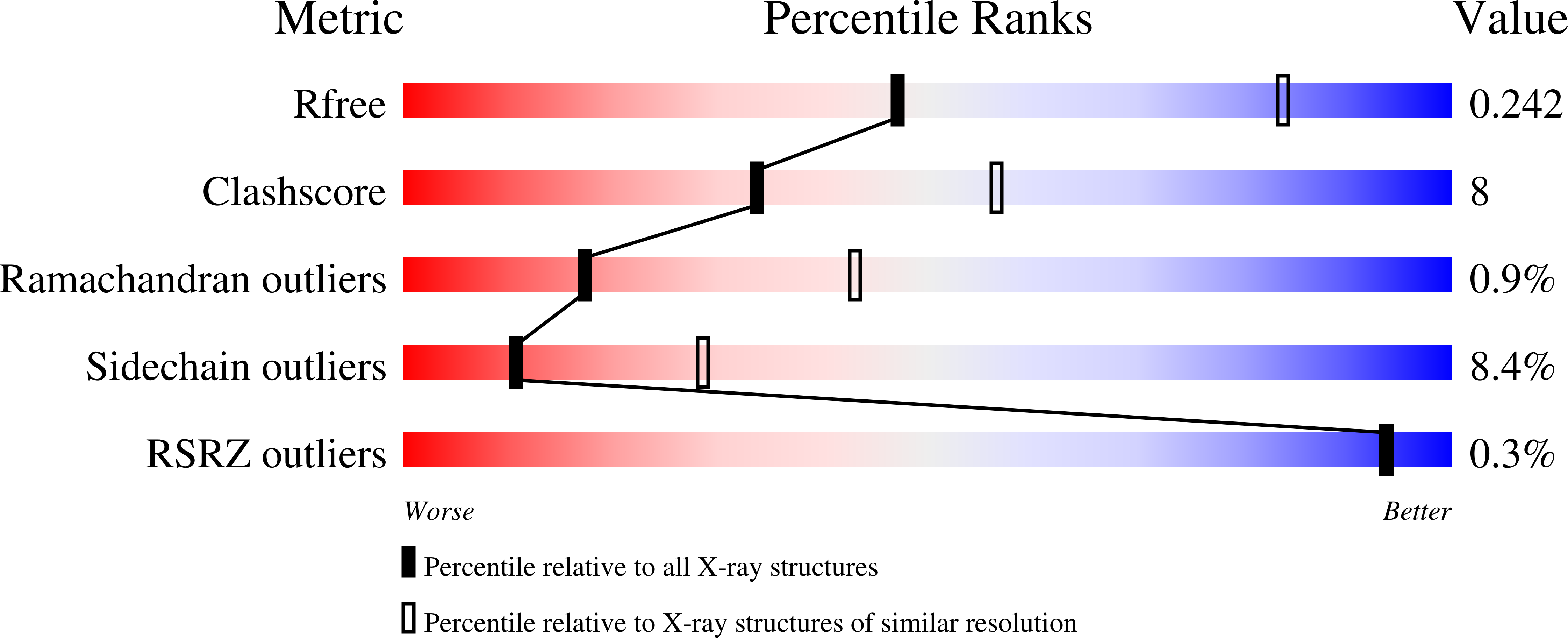A Novel Organization of Act Domains in Allosteric Enzymes Revealed by the Crystal Structure of Arabidopsis Aspartate Kinase
Mas-Droux, C., Curien, G., Robert-Genthon, M., Laurencin, M., Ferrer, J.L., Dumas, R.(2006) Plant Cell 18: 1681
- PubMed: 16731588
- DOI: https://doi.org/10.1105/tpc.105.040451
- Primary Citation of Related Structures:
2CDQ - PubMed Abstract:
Asp kinase catalyzes the first step of the Asp-derived essential amino acid pathway in plants and microorganisms. Depending on the source organism, this enzyme contains up to four regulatory ACT domains and exhibits several isoforms under the control of a great variety of allosteric effectors. We report here the dimeric structure of a Lys and S-adenosylmethionine-sensitive Asp kinase isoform from Arabidopsis thaliana in complex with its two inhibitors. This work reveals the structure of an Asp kinase and an enzyme containing two ACT domains cocrystallized with its effectors. Only one ACT domain (ACT1) is implicated in effector binding. A loop involved in the binding of Lys and S-adenosylmethionine provides an explanation for the synergistic inhibition by these effectors. The presence of S-adenosylmethionine in the regulatory domain indicates that ACT domains are also able to bind nucleotides. The organization of ACT domains in the present structure is different from that observed in Thr deaminase and in the regulatory subunit of acetohydroxyacid synthase III.
Organizational Affiliation:
Centre National de la Recherche Scientifique, Institut National de la Recherche Agronomique, Universit¨¦ Joseph Fourier, Commissariat ¨¤ l'Energie Atomique, D¨¦partement R¨¦ponse et Dynamique Cellulaires, France.

















